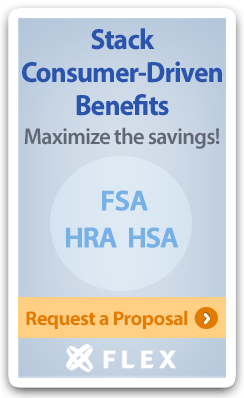Benefits Buzz
HRAs: Non-Discrimination Testing
Overview
Health Reimbursement Arrangements (HRAs) are self-funded group health plans that provide tax-free reimbursements to employees and their family members for out-of-pocket healthcare expenses.
HRAs are subject to non-discrimination testing according to Section 105(h) of the Internal Revenue Code. Simply put, an HRA cannot be offered exclusively for or more favorably to highly compensated individuals (HCIs). An HCI is defined as:
- One of the five highest paid officers; or
- An individual who owns 10% or more of the company; or
- An individual who is among the highest-paid 25% of all employees.
The consequence of failing the non-discrimination testing results in some or all of the reimbursements to HCIs having to be included in their gross income, subject to taxes.
Eligibility Test
HRAs are subject to an eligibility non-discrimination test. HRAs should not be designed for the exclusive benefit of HCIs (or a group of HCIs) or the eligibility non-discrimination test will be failed.
HRAs can, however, be offered to a class of employees so long as the class of employees is reasonable and not discriminatory. The classes should be based on bona fide business criteria, such as:
- Full-time vs. Part-time employees
- Salaried vs. Non-salaried employees
- Employees working in different geographic locations
- Union vs. Non-union employees
- Seasonal vs. Non-seasonal employees
- Permanent vs. Temporary employees
If, for example, an employer wanted to offer an HRA just to high-ranking executives who were all HCIs, that would violate the eligibility test, and all reimbursements to the executives should be included in their gross income, subject to taxes.
Benefits Test
HRAs also have a benefits non-discrimination test. The benefits test looks to ensure non-HCIs are offered similar benefits to HCIs. This generally means non-HCIs and HCIs should be offered the HRA with the same waiting periods, eligible expenses, reimbursement limits, and carryover provisions.
If, for example, non-HCIs were offered a $2,000 annual HRA benefit and high-ranking executives who are HCIs were offered a $5,000 annual HRA benefit, then the executives would have excess reimbursement amounts included in their gross income, subject to taxes. In other words, any reimbursement amount in excess of $2,000 would be taxable to the executives in this example.
The benefits test also states that the HRA cannot discriminate in favor of HCIs in the actual operation of the plan. For example, offering a 30-day run-out period to HCIs and no run-out period for non-HCIs would violate the benefits test.

